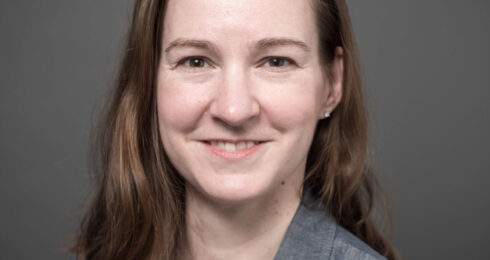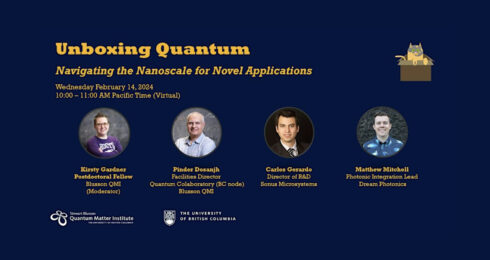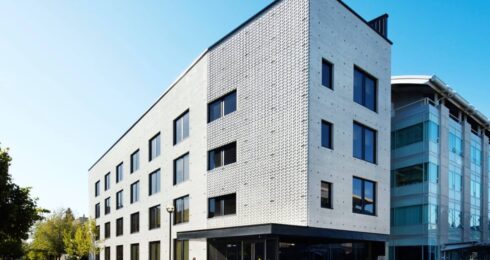Rafael Haenel* was only supposed to be in Vancouver for a year.
Haenel (pictured above) came to the Stewart Blusson Quantum Matter Institute (Blusson QMI) as a Master’s student three years ago following an undergraduate exchange where he studied and conducted experiments on ultracold molecular plasma. He made the switch to theoretical physics when he joined Marcel Franz’s lab in 2017, and has never looked back.
“It was a lot of fun to do experiments, but theory gives you a bit more opportunity to focus on concepts; in Marcel’s group, we do a lot of different projects so from a learner’s perspective, it’s a bit more diverse,” said Haenel.
With Franz, Haenel studied topology and strongly interacting models; he also worked periodically on projects in quantum computing with Robert Raussendorf; he continues to co-supervise a Quantum Pathways student on a quantum computing project with Étienne Lantagne-Hurtubise.
Haenel returned to Germany in September, where he is completing the second part of his International PhD in Quantum Materials (the “joint PhD program”) at the Max Planck Institute for Solid State Research and the University of Stuttgart. With most of his family in Berlin (six hours away by train), he is happy to be home.
In Stuttgart, Haenel is studying superconductors out of equilibrium, and working closely with experimentalists. In particular, Haenel and colleagues are looking at collective Higgs oscillations of the superconducting condensate.
“In the lab, they’re shooting laser pulses at small samples and observe oscillations of the superconducting order parameter,” said Haenel.
Higgs is a prominent term with analogies to particle physics; the Higgs particle may be a familiar concept to the layperson, having recently been discovered at Cern in Switzerland. It is the particle that gives some fundamental gauge bosons its mass. In superconductors it appears as a quasiparticle, a quantized collective excitation, and makes the photon acquire a mass. This is more commonly known as the Meissner effect.
Studying the Higgs mode inside a superconductor offers researchers the ability to study these concepts of spontaneous symmetry breaking, shared between the high energy and condensed matter community, on a smaller energy scale. Rather than using expensive, location-specific tools such as a particle collider, researchers study these concepts in a more accessible—yet still very complex—laboratory setting, giving physicists looking to understand the origins of the universe—and the mass that gives it shape—the tools to explore new fundamental physics.
“The mechanism behind the Higgs particle was first discovered in the field of condensed matter by Philip W. Anderson in 1962, so the scope of this research is huge,” said Haenel. “Signatures of the Higgs mode in superconductors were first observed in 2013, but the equipment required to do this work has improved so much that more is possible. What’s exciting is that at Blusson QMI, people are looking experimentally at the same field. It’s great to share these links.”
For Haenel, these links are part of why he enrolled in the joint PhD program.
“It’s fun to always be working on something new, and to be able to participate in this very collaborative research across two continents.”
And with a global pandemic in the background, Haenel has found some motivation in the change of surroundings.
“After working from home for so many months, it is nice to have new scenery; I have to learn new concepts and live in a new environment, so it has been motivating for me to be here, and to explore,” said Haenel. One benefit, he said, is that he has friends nearby; his colleague in the joint PhD program, Cissy Suen, has an office just four doors down from his.
He remains connected to Blusson QMI, and enjoys attending weekly lab meetings with Franz and his former labmates by Zoom.
“It’s very different, being back in Germany; near the university it is very quiet, almost secluded. The institute is located in a rather small town that is part of Stuttgart. We are surrounded by forest, and there is a shepherd, and when I open my window, I can often hear sheep,” he said. “I miss Vancouver, but it’s great to be here in Stuttgart.”
*A follow-up story published in 2023 is available on Rafael’s journey here.


